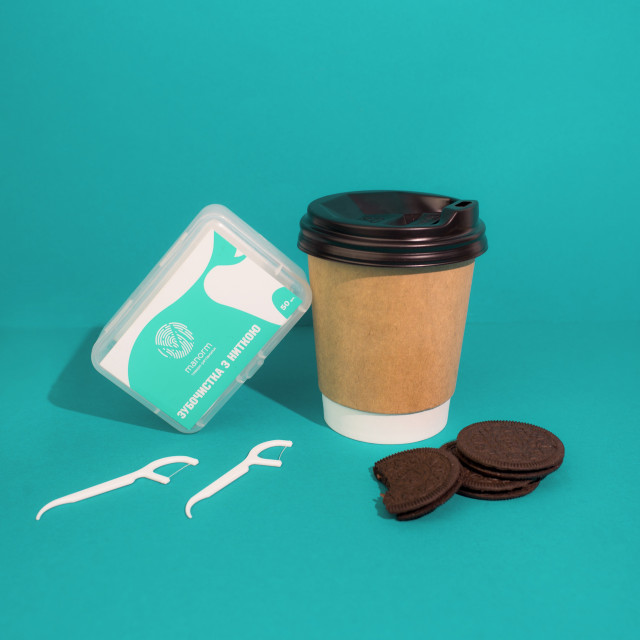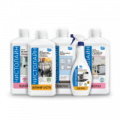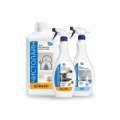Dental plaque:
causes, dangers, methods of removal

Content
Plaque is a serious threat to the oral cavity. Its appearance increases the risk of dental problems such as tooth decay and gingivitis. In addition, if you do not take timely measures to get rid of plaque, it can harden and turn into tartar. And such deposits on the tooth surface can eventually lead to periodontitis, the formation of gingival pockets, and eventually tooth loss. Proper and timely plaque removal helps to maintain the health and beauty of the dentition and the entire oral cavity. But how do you remove plaque at home? Is it possible?
What is plaque and why does it appear?
A small amount of soft plaque on the tooth surface is completely normal. It occurs during the day under the influence of natural processes occurring in the oral cavity. A thin film of plaque is the result of the vital activity of microorganisms that are normally found in the oral cavity. Small particles of food mixed with saliva are attached to it.
Regular and proper brushing of the teeth, which is carried out daily, successfully copes with traces of plaque. It does not harm humans, and dentists consider it an integral part of the body's daily life.
However, in some cases, plaque can remain on the surface of the teeth. Such a nuisance can be observed in the following cases:
- inadequate oral care;
- deficiency of solid food in the diet, which contributes to the mechanical cleaning of the tooth surface during chewing;
- malocclusion, including crowded teeth (in this case, regular brushing may not be enough to fully eliminate plaque);
- metabolic disorders, which lead to changes in the microflora of the oral cavity and acceleration of plaque formation;
- use of certain medications (in this case, pigmented plaque, such as black or brown, often appears);
- inflammatory processes in the oral cavity.
And the soft plaque that remains on the teeth, as we said above, over time begins to harden and form tartar as a result of mineralization processes.
The Dangers of Plaque
The plaque layer on the surface of the teeth contains many bacteria. In the course of their vital activity, these microorganisms secrete acids that have a detrimental effect on the enamel, damage it and cause caries.
Hard deposits also affect part of the gums – the soft tissues located near the cervical part of the teeth. And if the situation is ignored, plaque leads to gingivitis and more severe forms of gum inflammation.
What can I do to remove soft plaque?
Soft plaque that is observed on the teeth can be eliminated at home. To do this, it is extremely important to equip yourself with a high-quality toothbrush and additional accessories, as well as strictly adhere to a clear algorithm of actions. Experts recommend:
- choose electric or ultrasonic brushes that help remove dirt from the surface of your teeth more effectively;
- regardless of the chosen brush, pay attention to all surfaces of the teeth, both lateral and horizontal;
- thoroughly clean the interdental spaces with the help of additional accessories – dental floss or brushes;
- don't forget to rinse your mouth after cleaning.
It is necessary to brush your teeth twice a day. It is also important to visit the dentist regularly for routine hygienic cleaning – to carry it out at least once every six months.
Which accessories to choose for detailed plaque cleaning?
A toothbrush (even the most modern models) is not enough to achieve perfect teeth cleanliness. A significant amount of plaque accumulates between the teeth, where the bristles simply do not reach. And special accessories will help you remove it from there:
● Dental floss. It is a thin floss, usually made of nylon or polyester, that is convenient for cleaning the interdental spaces from areas that are inaccessible to toothbrushes. Manufacturers offer threads with bamboo charcoal, which have additional antiseptic properties, as well as thread with mint, which perfectly freshens breath.
● Toothpicks Modern toothpicks are equipped with a slingshot with a small piece of dental floss at one end, their second part is a sharp tip. They're not as effective or convenient as regular dental floss, but they're great for use outside the home.
● Interdental brushes. They look like small brushes on the handle, have a small diameter, so they easily penetrate into the interdental spaces, more effectively than toothpicks. However, they are not convenient and not very practical in case of severe crowding of the dentition.
Accessories for additional cleaning should be used from a very early age - they help to avoid interdental caries and inflammation of the gums. For children, there are special toothpicks that can be used by parents and older kids - they fit comfortably in the hand.
How to deal with stubborn hard plaque?
Many people wonder how to remove plaque at home when it has already hardened and become resistant to the effects of a regular toothbrush. Dentists warn that it should not be removed with sharp and hard objects or folk methods. Such methods of dealing with plaque can lead to damage to tooth enamel, injuries and burns of the mucous membrane.
If plaque has formed in your mouth, only a doctor knows how to get rid of it. The only safe and reliable way to combat this phenomenon is specialized cleaning in the dental office. The dentist will not only remove hard deposits, but also tell you how to prevent them from appearing on your teeth in the future.






